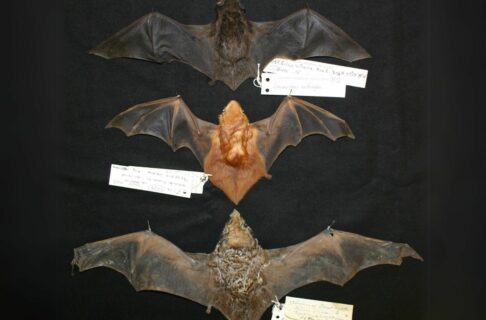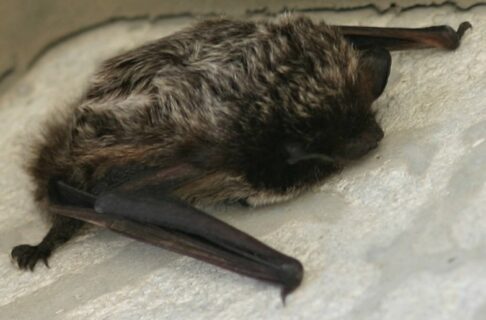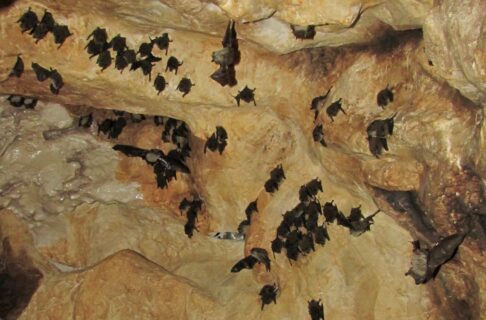By Dr. Randall Mooi, Curator of Zoology, Manitoba Museum
October is when bats – or their silhouettes, at least – are hard to miss! You’ll likely come across multiple houses this month proudly displaying these winged wonders alongside jack-o-lanterns and witches. However, these fascinating flying mammals won’t be joining in on the fun of trick-or-treating. By the end of September, three of Manitoba’s bat species will have migrated south to find food, whereas the other three will be hibernating locally.
Bats: Small but Mighty
Manitoba’s largest species is the hoary bat with a 40 cm wingspan, though it weighs only about 30 g – less than an AA battery! The smallest species weighs as little as 5 g – just a little more than a quarter. They are all nocturnal and, although they do feed on mosquitoes, usually go for larger prey such as moths and beetles. Bats can be important in controlling agricultural pests, saving billions of dollars in crop damage.
Scary times to be a bat
Because Manitoba’s bats are active at night, most of us are unaware that their numbers have plummeted across North America. Several are endangered, including our own little brown bat and northern long-eared bat. These two hibernating species are susceptible to white-nose syndrome, a fungal infection (likely introduced from Europe) that interrupts hibernation patterns and has decimated bat populations in the east. This fungus now occurs in Manitoba and similar dire outcomes are expected.
Thousands of migrating bats are killed by wind turbines every year. Although renewable energy is an imperative, bats are attracted to wind turbines with murderous results. Because bats migrate on relatively calm nights for short periods in spring and fall, it should be possible to mitigate the effect of wind turbines on bat populations while minimizing economic impacts.
Wing it with us this fall!
Even though there may not be any real bats flitting through the air this October, it is the perfect time to visit the Manitoba Museum to find out more about these fascinating flying mammals. Take a walk through the Parklands Gallery and into a replica “Bat Cave” to see how these nocturnal animals live, and make other cool discoveries underground. And don’t forget to put on your costume and join us for our annual Halloween Takeover – a safe, weatherproof, and fun-filled experience for all ages – October 28 and 29!






